gravity
Latest

Lucid's Gravity electric SUV will have a max range of 440 miles
Lucid’s Gravity, a three-row electric SUV, is officially shipping in 2025 with a retail cost somewhere around $80,000. It boasts a max range of 440 miles and a high-tech interior.
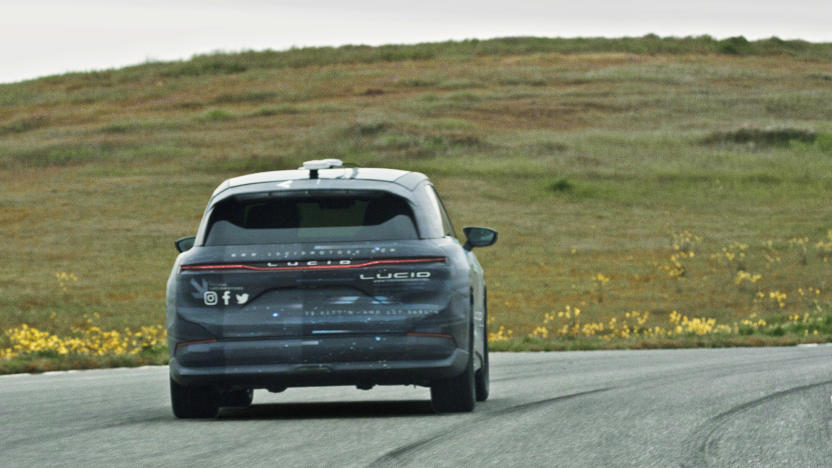
Lucid begins testing its electric Gravity SUV on US roads
Lucid announced today that its Gravity SUV was entering a "new phase of development, now testing on public roads throughout the US."

Lucid teases its three-row Gravity electric SUV
Lucid is offering a peek at its Gravity electric SUV, although you'll have to wait until 2024 to get one.

Hitting the Books: Gravity's mystery may prove our multiverse exists
Welcome to Hitting the Books. With less than one in five Americans reading just for fun these days, we've done the hard work for you by scouring the internet for the most interesting, thought provoking books on science and technology we can find and delivering an easily digestible nugget of their stories.

NASA, ESA will study how artificial gravity can keep astronauts healthy
Astronauts aboard the International Space Station have to exercise and alter their diet to endure extended stays in microgravity, but NASA and the ESA hope to find a better way. They're about to start a study that will explore how artificial gravity might keep astronauts in good shape. Volunteers at the German Aerospace Center will spend 60 days in bed starting on March 25th at an incline that will send blood away from their heads. Once a day, a "selection" of the subjects will take a spin in the Center's short-arm centrifuge in a bid to send blood back toward their legs.
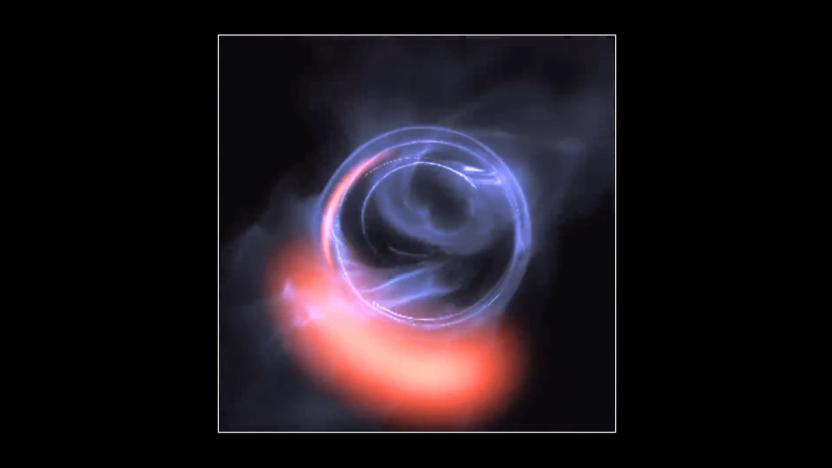
Scientists find evidence of a black hole at our galaxy’s center
Researchers have long suspected that a supermassive black hole lies in the center of our galaxy, and now they have strong evidence to support that suspicion. Using the Very Large Telescope -- an array of four individual telescopes stationed in the Atacama Desert in Chile -- scientists have been observing Sagittarius A* (pronounced Sagittarius A-star), an object in the center of the Milky Way galaxy thought to be a supermassive black hole. During their work, the research team observed three bright flares orbiting around Sagittarius A*, which completed 150-million-mile circuits in just 45 minutes. That's about 30 percent the speed of light.
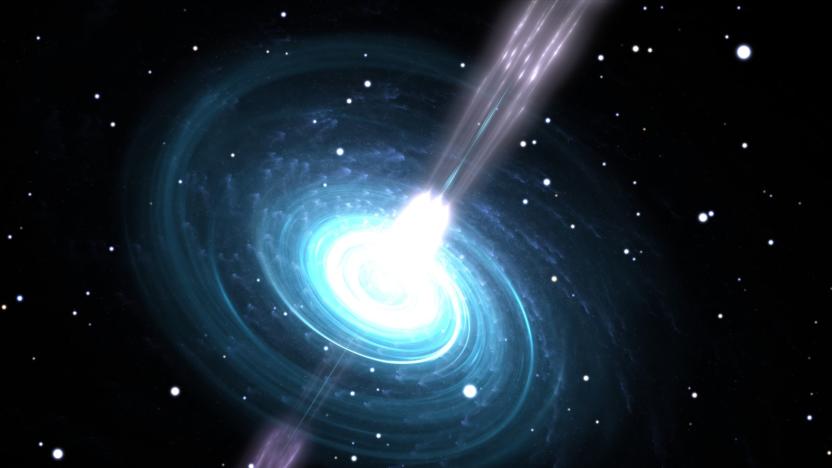
Radio telescopes show theory of gravity holds in extreme situations
Radio telescopes have been crucial to some significant discoveries regarding the nature of the universe. Now, though, they're verifying the basic rules of the cosmos. An international group of astronomers has shown that Einstein's theory of gravity holds up even in more extreme situations. The team spent six years using a trio of radio telescopes (Arecibo, Green Bank and Westerbork Synthesis) to track an unusual three-star system with a pulsar bracketed by two white dwarfs -- a textbook example of extreme gravity in action. How that pulsar moved would determine whether or not Einstein's concept passed muster.

Scientists validate theory of relativity on galactic level
Einstein's theory of general relativity is rather important when it's crucial to the modern understandings of the universe and technology like satellites. But does it hold up with something as vast as a galaxy? Thanks to researchers, we know the answer is "yes." They've conducted a test that used two comparatively distant galaxies, one in front of the other, to show that relativity checks out.

Gravity waves could help scientists detect earthquakes faster
Tracking minor changes in gravity when an earthquake hits could buy us precious life-saving minutes, according to a new study published in the journal Science. Revisiting data from the huge 2011 Japan earthquake, the researchers indicate that shifts in gravity could've told people the scale of the quake three minutes after it began. The findings come on the heels of a separate study (presented at the annual meeting of the Geological Society of America) that theorized that 2018 would see a surge in earthquakes, due to a slight slowing of the rotation of the Earth.
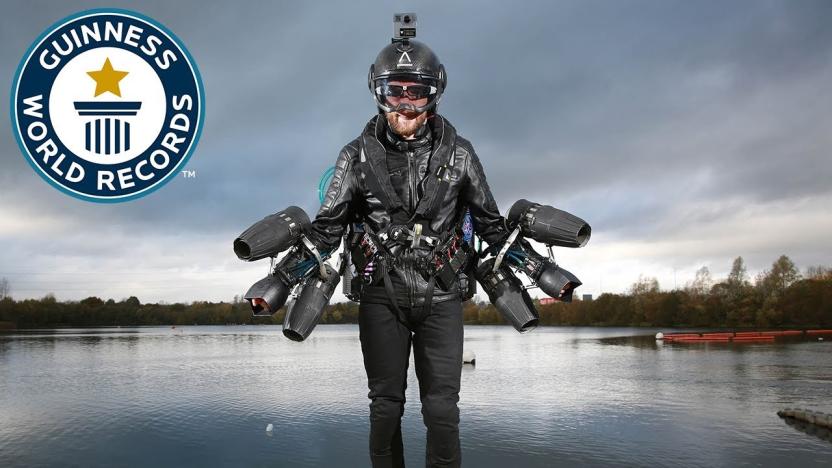
The guy who built his own Iron Man suit now has a Guinness record
Remember that guy who built a homemade Iron Man suit? Well, with the help of his arm-strapped, gas-powered turbine engines, he just earned himself a Guinness World Record title. As The Mirror reports, Richard Browning and Daedalus (the name of his suit) reached flying speeds of 32.02 mph and Guinness awarded the feat with a title for the fastest speed in a body-controlled jet engine power suit. If you're wondering how many competitors there could possibly be in such a category, the answer is one. Browning is the first title holder.

Getting to and living on Mars will be hell on your body
While NASA and SpaceX figure out how to get to Mars, they're also thinking about how the 200-day journey and life on the red planet will affect humans. Astronauts will be dealing with nasty things like muscle atrophy and bone loss, intra-cranial pressure, psychological issues, lack of resources and long-term radiation exposure. NASA and its partners are working on things like "torpor," a type of space hibernation, and protective Mars cave dwellings with a view. To learn more, Engadget spoke with NASA scientist Laura Kerber and Spaceworks COO John Bradford at the Hello Tomorrow symposium in Paris.
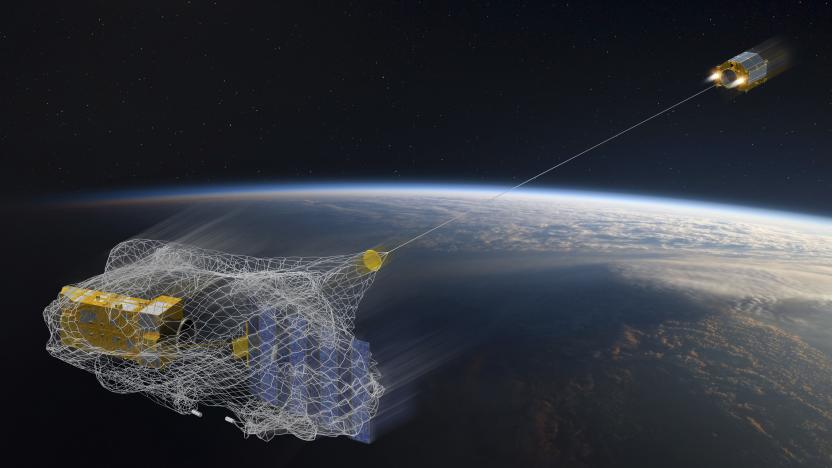
The robots that will sweep Earth's skies
After six years in space, China's first orbital station, the Tiangong-1 (aka the "Heavenly Palace") has finally outlived its operational limits and begun its descent to Earth. It's expected to re-enter the atmosphere in a few months, whereupon a majority of the 9.3-ton station should burn up before reaching the surface. This is how defunct satellites are supposed to be disposed of. Unfortunately, until very recently, that hasn't often been the case.

Astronomers prove Einstein right: Stars can warp light
In a new study published today in Science, researchers achieved a rare event -- simultaneously proving Albert Einstein both right and wrong. The scientists were able to confirm one of Einstein's theories, something even he wasn't sure would be possible.

Homemade 'Iron Man' suit requires a special kind of crazy
Remember the, insane record-shattering flight of a jet-powered hoverboard? UK inventor Richard Browning thought that riding on top of a jet pack wasn't crazy enough, so he strapped six kerosene-powered microjets to his arms. That transformed him into a bargain store Iron Man, helping him get off the ground in what looks like the most dangerous way ever.

The first gravitational wave discovery wasn't a fluke
If you were worried that the first confirmed detection of gravitational waves was just a one-off result... don't be. Researchers analyzing LIGO data have verified a second instance (recorded in December 2015) where two black holes merged and produced the hard-to-spot behavior. The circumstances are decidedly different this time around, though. Ars Technica observes that the black holes were much smaller than those in the first instance, and spent more time on their collision course. While that offered more data to collect, the reduced intensity also introduced more errors -- it was harder to determine the masses of these holes.

ICYMI: Gravitational waves and holographic Holocaust memory
try{document.getElementById("aol-cms-player-1").style.display="none";}catch(e){}Today on In Case You Missed It: NASA's mission to figure out where black holes are located won't actually deploy until 2034, but the science behind the sound experiment is being worked on now. University of Southern California's Institute for Creative Technologies created a 3D video rig to capture people's memories, saving the video and sound mash-up for future generations to hear first-hand accounts of the Holocaust. The "In Good Company" shoe for turning off phone notifications automatically is here; in case you're interested in the human ancestor story, NPR has a good summary here. As always, please share any great tech or science videos you find by using the #ICYMI hashtag on Twitter for @mskerryd.

The artist making physics and a conspiracy theory into music
Peaches is her aunt. Jared Leto's a fan and so is Jean-Michel Jarre, who sent her to live with an indigenous tribe in the Amazon. She's modeled for high-end fashion events and composed for German theater. She's conducted magnetic resonance imaging studies on mutated HIV cells and had paintings featured in galleries in New York. She taught herself the piano at age 10. At 15, she successfully petitioned the Los Angeles courts to be home-schooled; one year later, she enrolled at the University of Maryland. Her upcoming album incorporates the synthesized sounds of actual stars, physics themes and pitch-shifting conspiracies linked to Bob Marley and Hitler. Her list of professional accomplishments puts other so-called pop culture multihyphenates to shame. She is Simonne Jones, and you will know her name.

Meizu hopes Indiegogo can fund its first US product
Meizu is a company most Americans likely haven't heard of. But it's actually one of the largest consumer electronics brands in China, having sold over 20 million smartphones last year. Its latest and greatest handheld is the Meizu Pro 6, which boasts a 5.2-inch Super AMOLED display, a 21-megapixel camera and a whopping 10-core processor. Now the company has its sights set on the US market. But it's not planning on introducing a phone here. Instead it's launching a wireless speaker. And it's doing so, surprisingly enough, through crowdfunding site Indiegogo.

EU invests 1 billion Euros to make quantum computing practical
The European Union doesn't want to simply wait around while scientists figure out the fundamentals of quantum computing; it's giving the concept a big financial boost, too. The European Commission has revealed plans for a €1 billion ($1.13 billion) "quantum technologies flagship" that, like other EU-level efforts, aims to turn scientific discoveries into practical realities. The Commission expects the project to help everything from motion sensors in phones to virtually unhackable communications. Honest-to-goodness quantum computers are some of the long-term goals, the EU says.

ICYMI: A space-based full service stop, bat drone and more
#fivemin-widget-blogsmith-image-426380{display:none;} .cke_show_borders #fivemin-widget-blogsmith-image-426380, #postcontentcontainer #fivemin-widget-blogsmith-image-426380{width:570px;display:block;} try{document.getElementById("fivemin-widget-blogsmith-image-426380").style.display="none";}catch(e){} Today on In Case You Missed It: DARPA's own AAA satellite service to service satellites orbiting Earth could launch in about five years, if all the testing goes as planned. A new drone is based on the form of a bat and the resemblance is uncanny. And Google is helping robotic graspers learn hand-eye coordination by giving them new objects to pick up. If you've followed along with some of the 3D-printed prosthetics we've done stories on, you'll want to see this glitter shooting, darling girl. And as always, please share any great tech or science videos you find by using the #ICYMI hashtag on Twitter for @mskerryd.








